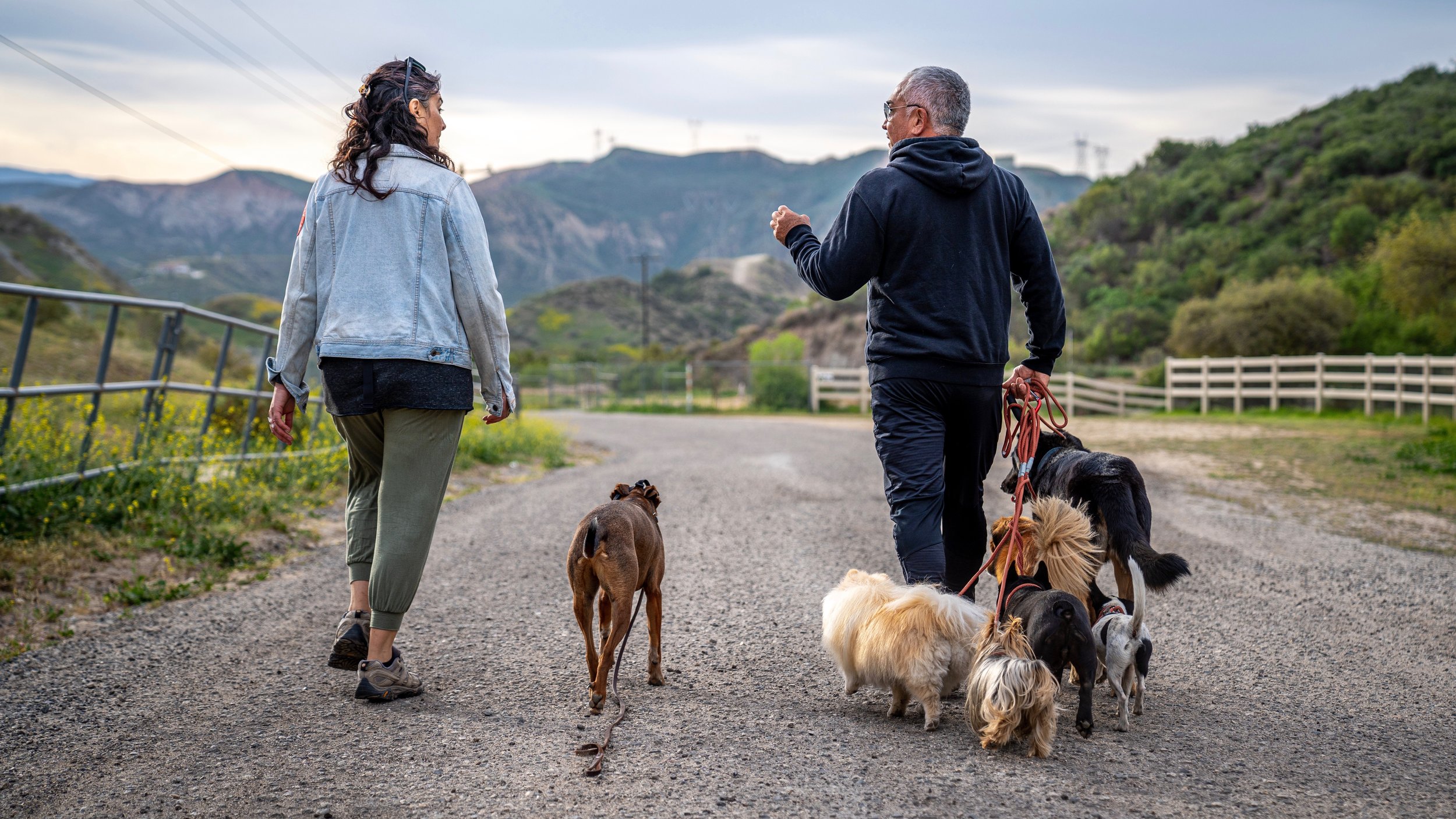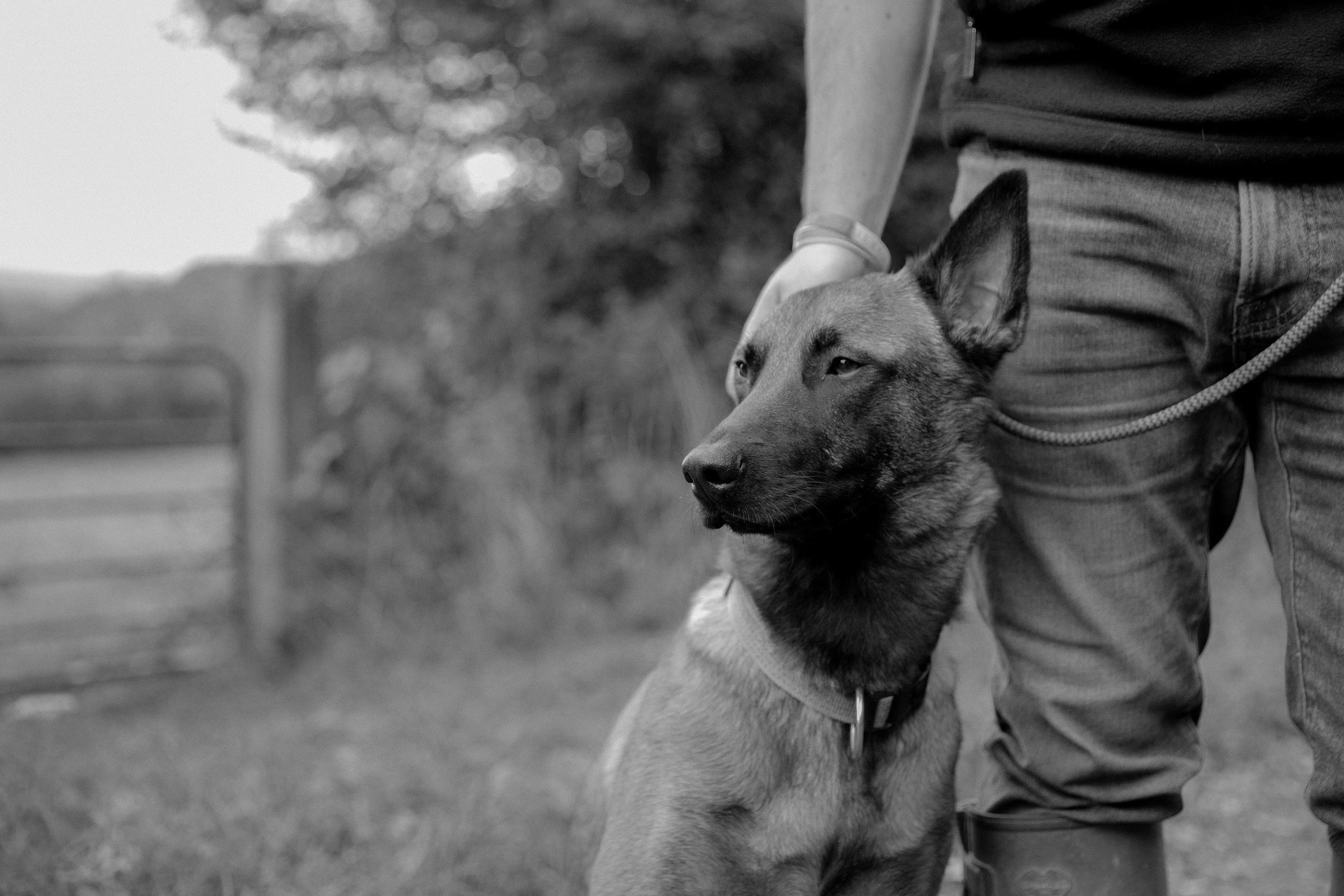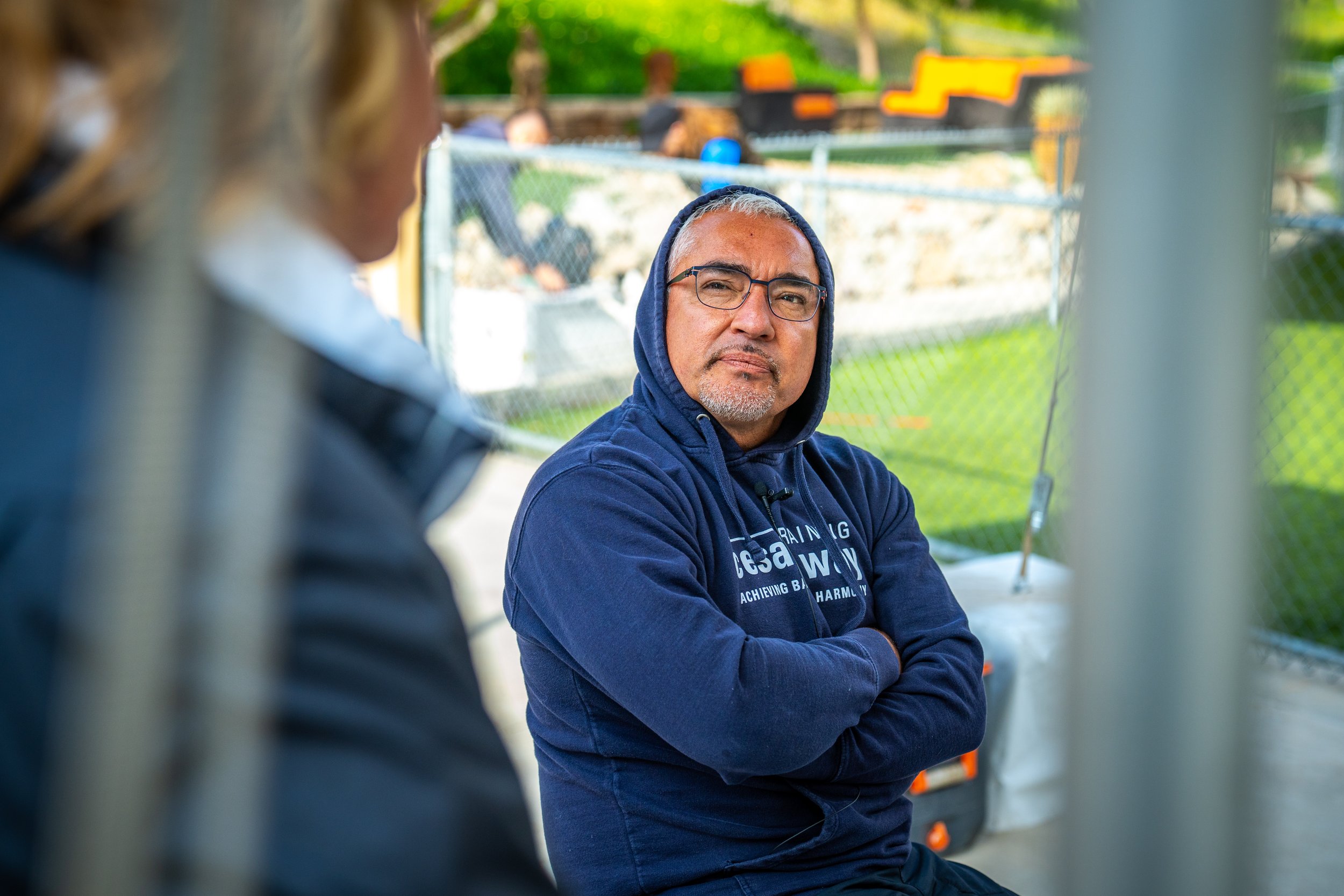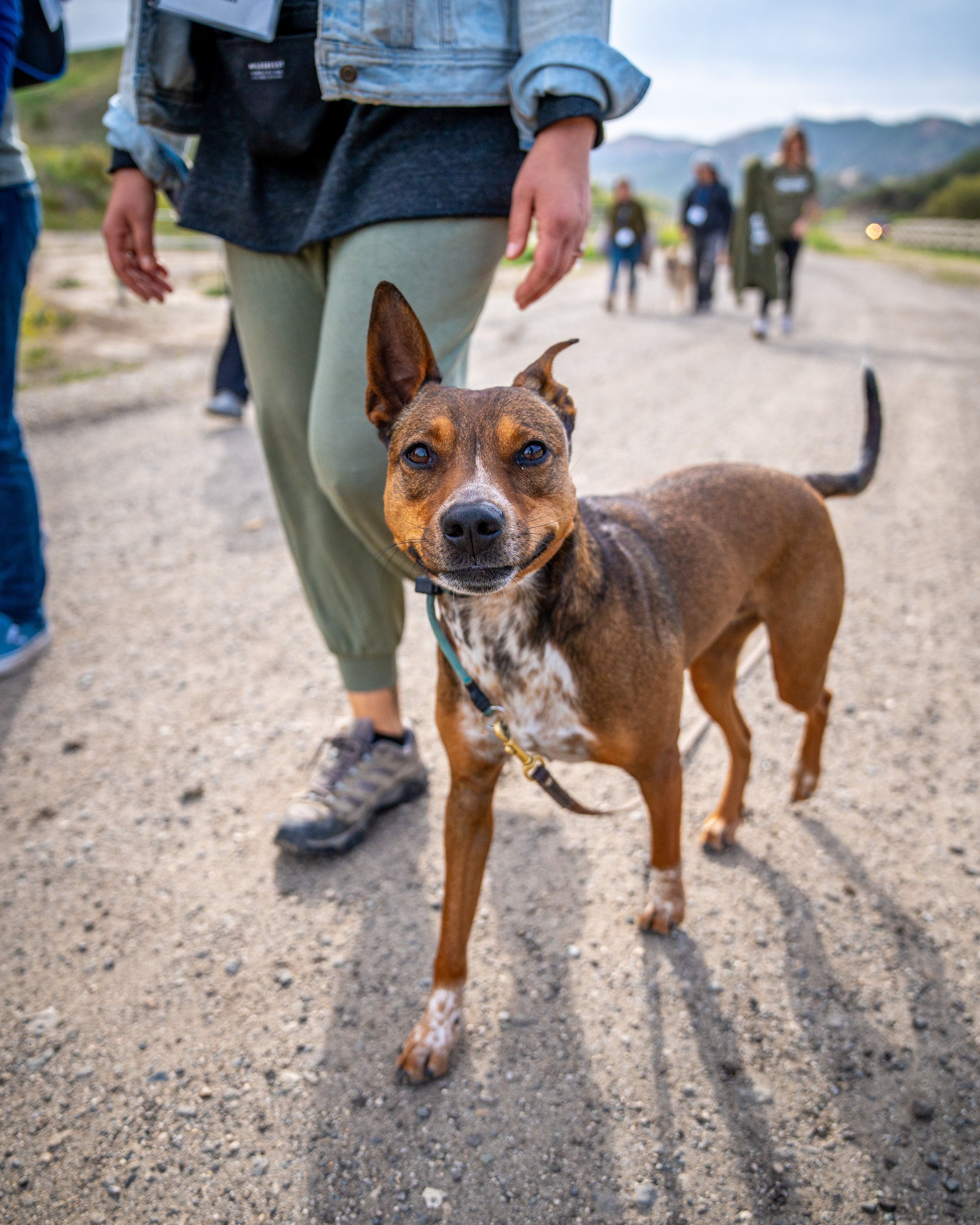
Reactivity & Aggression | Specialist Support
“We got in touch with James after a google and reading the positive reviews. It was truly the best thing we ever did for our dog Ollie, and for us. We had tried 2 trainers previously, but were still in a difficult place with Ollie who was very reactive on the lead to other dogs. James met us for a 3 hour session and instantly could provide us with incredible knowledge on why Ollie was reactive and what we can do to let him know that is not what we want him to do when he sees other dogs. Since that one session, Ollie has come a long way.
We avoided walking on popular dog walking routes and would get up at the crack of dawn to avoid other dogs, but now we are able to walk Ollie confident in our knowledge of how to firstly prevent Ollie reacting and secondly how to respond when he does. We cannot recommend James enough, he has improved our relationship with our dog and understanding that actually he is a confident teenage boy rather than the anxious and scared dog we thought we had! Thank you James!”
✶✶✶✶✶
Holly and Ollie
Dog Trainers for aggressive dogs. Dog trainers and behaviourists near me.
The Symptom of a Problem
Reactive and Aggressive behaviour in dogs never happens without a reason. At The Dog’s Way, we believe it is essential that you know the root cause of your dogs behaviour, if you want to succeed in a long term resolution.
Every dog we work with starts with a Full Assessment and Diagnosis of their behaviour which is the foundation for all of the work we do with your dog. Is your dog confident, or more nervous? Do they rely on you? Do they trust you to protect them, or are they possessive or protective of you? Are they excited or frustrated? Are they really a lot friendlier than they look?
Knowing why your dog is reacting is the biggest part of the puzzle when it comes to resolving it. Which is why it’s our number one priority with every dog that we work with.
Think your Dog is bad? We’ve probably seen worse.
As behaviour specialists, there is no type of issue that we deal with more on a day to day basis than Reactivity and Aggression. It is, as they say, our Bread and Butter. In the overwhelming majority of cases, Reactive behaviour isn’t as bad as it looks, and a little knowledge and understanding can go a long way. But even if your dog really is a lot to deal with - don’t worry. We’ve still probably seen worse.
Reactivity and Aggression towards dogs.
Lunging at Cars, Bikes & Scooters
Aggression towards Family Members
Over excitement and frustration on a lead
Territorial Reactivity & Aggression
Fighting between dogs in the Home
Resource Guarding
Unpredictability towards Strangers
Jumping and grabbing at the Handler
THE JOURNAL | featured Reactivity and Aggression Articles
We are really good at getting dogs walking calmly and safely on a lead - quickly.
We have to be - because the dogs we work with can be a safety risk, so we prioritise lead safety and calm, confident handling as something that we want every client to have by the end of their first session.
If your dog isn’t safe and calm on a lead, then you can’t feel safe and calm in yourself, and you can’t focus on teaching the skills your dog needs - or influence their state of mind in a healthy way if you aren’t feeling good yourself.
We prioritise safe handling because we know our clients can’t afford to spend 6 months teaching their dog not to pull their arm off when they have bigger issues to prioritise. We also know that lead work has to be failsafe - because dogs aren’t perfect, and neither are we - so we’ll also help you find the right tools that are safe and comfortable for you and your dog, just in case things in life don’t go to plan.
Resocialisation Pack Walks help dogs that are anxious, under socialised or aggressive towards other dogs. Learning to reconnect with their own species starts with being safe and calm on a lead - so that our ambassador dogs can work their magic!
We work a little differently. Consider us your Option C(alm).
When it comes to working with reactive dogs, most people get stuck between Option A - throwing food at the problem and Option B - leash popping everything your dog does wrong.
In both instances, it’s very unlikely that any real diagnosis has taken place beyond “yep, your dog is reactive”. Which means that you could be giving food to an over excited dog and making them even more excited, or you could be delivering a barrage of physical corrections to a nervous dog that just wants a handler they can feel safe with.
When we work with your dog, diagnosis drives all of our decision making. If we have a nervous dog, we’ll focus on teaching you how to create relaxation through calm touch, and using relative positioning to remove responsibility and promote a feeling of safety. If we’re working with an over excited or frustrated dog, we’ll show you how to how to counter condition the stimuli that get your dog worked up, and redirect their energy into breed specific activities. If your dog is territorial, we’ll show you how to set boundaries around your personal and intimate space to put a stop to possessive behaviours.
And if we’re dealing with a dog that displays genuine aggression or has a bite history? We’ll show you how to get your dog under safe control quickly, and de-escalate the unhealthy behaviours like lunging and biting that are most dangerous (without reinforcing them), whilst also give you the understanding to address the cause of the behaviour at its root.
We start all our Reactive and Aggressive cases away from the home. Here’s Why:
“My dog is most aggressive in or around the home - and it’s bitten several people who walked through the front door. Can you also walk through our front door so we can show you how bad the behaviour is?”
“I find it very difficult to keep control of my dog around other dogs when out on a walk. There have been several incidences where my dog has attacked other dogs. Can you walk around my local area with me so you can see what a nightmare I’m having?
Apart from the glaringly obvious reason why these are not a great way to start a training session, there are actually several other key reasons why it doesn’t help to work with aggressive dogs in their home environment.
Your dog has everything to lose when defending their territory, meaning that yes - they will show their most aggressive side, making it much more difficult to diagnose underlying cause. Aggression masks other behaviours like fear, anxiety and insecurity. It’s also very difficult to distinguish between a dog that is possessive of the owner and territorial over their home environment whilst in situ. Getting your dog away from the home makes all of this a lot clearer.
You need to learn how to handle your dog safely in a low risk environment - before moving back into more challenging real world scenarios. No one wants to find themselves in a firefight, and when it comes to working with dogs, that means being properly prepared and educated in how to handle your dog safely, before going on a walk or inviting someone through your dog. Our paddocks, and our ambassador dogs, are here to ensure just that.
We don’t need to see your dog at their worst to know what a worst case scenario looks like. We are more than capable of diagnosing serious issues based on lower levels of behaviour expression, and it’s less stressful for both you and your dog if we can do so at a lower intensity. It’s not our goal to back your dog into a corner and wrestle them into submission. Anything we can do to reduce stress, we will - and the easiest way to do that is in a neutral space.
We deal with Reactivity and Aggression every day - we’re used to spotting red flags, deescalating dangerous situations quickly and helping you to develop the skills you need, fast. That’s why we always start at our secure paddocks - and graduate to real world sessions down the line - because we know it works.

Dive Deeper. Understand More. Make Giant Leaps forward.
Our 2 Hour Behaviour Intensive. Book Yours Today.
Members Price | £79.00
Standard Price | £119.00
Our Signature intensive Sessions are what have always made us different - giving our customers more time to make significantly more progress and tackle big behaviour challenges in a single session. 95% Of our clients get their issues solved in 3 sessions or less - because we take the time to dive into the real issues and make real targeted change. You’ll be amazed at what 2 hours can do.
Can not recommend James highly enough! We went to see James as Loki was pulling and reacting whilst walking on lead, other trainers had not been helpful at all and in fact had made Loki’s reactivity worse. James straight away recognised the issue and provided us with a straightforward and quick correct to the issue. He helped us really understand Loki’s problem and taught us how to firstly prevent it and then secondly how to deal with it correctly to show we weren’t happy with how he was reacting! James and Charlie have changed our lives and I would never ever go to another trainer ever again!
✶✶✶✶✶
Will & Loki
Had my first one to one training session with James yesterday. Finn and I learned more than we thought we new. Finn is my 5th border collie and a real live wire very anxious and reactive. James taught me lots of useful tools to use to help Finn and I continue our journey together. I would definitely recommend this training plan and it's worth every penny. I came away from the session feeling I've got the best collie in the world that's thanks to James building our (probably mine mostly) confidence.
✶✶✶✶✶
Steve & Finn

Lessons in Reactivity.
Introducing a Pitbull to a Llama.
Lesson 1 | Why food doesn’t solve fear based reactivity. The Bear Analogy.
Dogs are so much smarter than having a binary relationship with the environment based on “Good” and “Bad” associations. The most common cause of reactivity in dogs is nervousness, fear or anxiety. If your dog sees something that they are nervous or anxious about, they consider it a genuine threat, danger or challenge. In the exact same way that you would, if you were going for a hike in the Wilderness and a bear jumped out onto the trail in front of you. If I was stood next to you, and I was supposed to be your wilderness guide, would you feel better about the threat of a wild bear if I told you to look away from it and focus on my delicious bag of hiking treats?
No. you’d be terrified. Because now, not only do you have the bear to deal with, but the person who is supposed to be your guide is completely incapable of protecting you!
Dogs aren’t stupid. They know when something represents a danger, and food is not going to change that association. A dog that feels threatened will do its best to defend itself, unless it knows that you can do it for them. A dog that feels safe is a dog that will stay calm. Your job is to provide that Protection.
Lesson 2 | Capital Letters and Full Stops. A Correction will never teach your dog what to do. A clear Direction and Outcome will.
When you work in behaviour rehabilitation, the simple reality is that you spend a lot of time reducing the prevalence of unwanted behaviours. In the scientific world - that’s called Punishment. It’s called punishment, because that’s the word that B.F Skinner chose to use back in 1938. That’s it, that all.
Punishments, Corrections, Aversive’s. The words change, and the inescapable reality of undesirable behaviour is that you cannot change it or remove it with reinforcement alone. That is the fundamental science of operant conditioning and we cannot change it. Any more than you can slow down a car if you have your foot on the gas pedal. Because when we move beyond the words, and look at the function behind them, they exist exclusively to interrupt and to deter the successful outcome of a behaviour that we don’t want a dog to practice.
That does not mean that we have permission to be aggressive. That means that we have the knowledge and responsibility to train in a smart, considered and conscious way.
Conscious training means knowing how to handle a dog safely and interrupt aggression with maximum effect and minimal force. It means knowing how do disagree fairly, without losing your cool or getting frustrated. But most importantly, it means knowing that you cannot teach a dog what to do or how to behave with a Punishment - only interrupt the behaviour you don’t want.
When it comes to reactive and aggressive dogs, A correction is nothing more than the capital letter at the beginning of a sentence. Your message - what you teach, how your dog learns - is all about what happens next.
What is your full stop? What is the outcome that you create? That’s what matters most. Did you teach your dog how you wanted them to respond? Did you provide a better way forward? Did you show them how to succeed?
Learning how to deescalate a situation quickly means teaching your dog to resolve disagreement in a healthy way. We teach our clients to create calmness as an Outcome, not Fight, Flight or Avoidance. Because a calm state of mind, is one that you can teach.
We want you to maximise the amount of time you spend showing your dog what you do want, and nurturing the behaviour you love. We want to create opportunities that maximise your dogs chance to succeed. We want to give them other options besides aggression, and make it easier for them to communicate their needs.
Lesson 3 | Dogs will always be the best teachers for Dogs.
It’s a simple lesson - that a human will never be a substitute for another dog. That’s why our Ambassador dogs are always on hand to help when you visit us at Underhill Farm. they’re there to act as a calm influence, even if your dog is going off the rails. They’re there to help us with our assessment and diagnostics, so we can get a better idea of what’s driving your dogs behaviour. And they are a huge part of our resocialisation work when integrating reactive dogs back into society.
They are an example to you too - to show you what a healthy, happy, psychologically balanced dog can be, and how to practice healthy behaviour with your own dog. Our dogs are our family and our best friends, and we rely on them so much for the work that we do.










In this case profile, we revisit one of the most popular dogs on the planet, and one of the dogs that we see most often for behavioural issues - the Cockapoo.